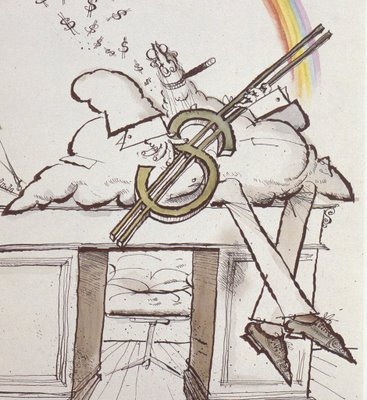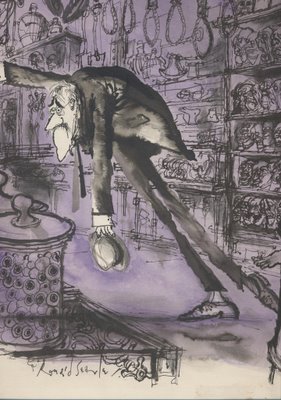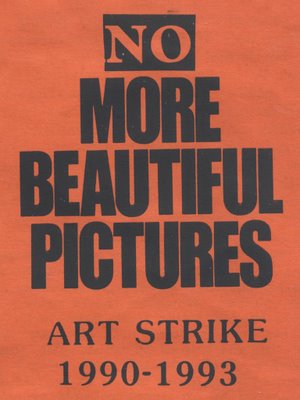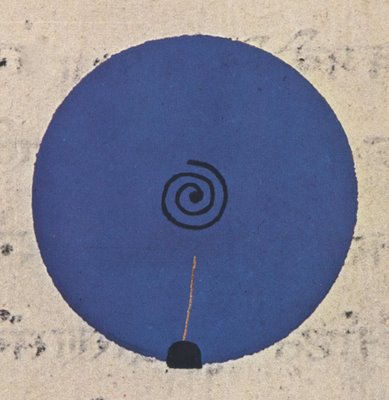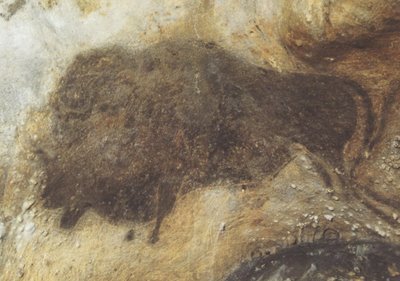###
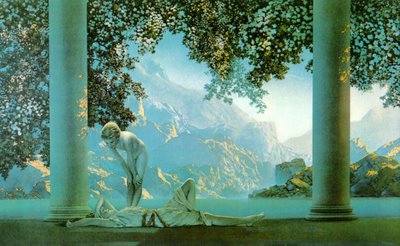
This illustration by Maxfield Parrish recently sold for $7.6 million, making somebody very wealthy. Parrish could've used some of that money toward the end of his career, when he fell out of favor with the public.
After Parrish died, two rival art dealers entered into a bitter tug of war over his artwork. The battle raged in angry lawsuits from coast to coast. (cf Cutler v. Gilbert) Each dealer claimed to be protecting the Parrish legacy as charges of fraud, counterfeiting, slander, libel and profiteering flew back and forth. Among the accusations traded in the Boston Globe:
One of the dealers was a "convicted swindler" who pleaded guilty to a felony. One of the dealers was selling fake Parrishes to unsuspecting buyers
One of the dealers was reproducing Parrish's art without permission
One of the dealers defrauded a store owner by charging $10,000 for the right to call her store the "Parrish Connection" and use the artist's signature as its logo.
One of the dealers was trying to create a monopoly to control Parrish reproductions out of pure greed.
One of the dealers burned down Maxfield Parrish's house
Sometimes being a shrewd art dealer pays better than being a talented artist. One of these fine ladies lives in a mansion modeled partially after the palace at Versailles. The other ran several corporations (sometimes going under the pseudonym "La Contessa De La Gala"). Both were moved by the beauty of Parrish's art to fight over his copyrights like two scorpions in a bottle. Meanwhile Parrish slumbered peacefully beneath the soil.
It's hardly news that illustrators are commercially exploited. Art that never found its way back to the artist from the printer today sells for hundreds of thousands of dollars. A Rockwell just sold for $15.4 million. An N.C. Wyeth sold for $2 million.
Meanwhile, young illustrators face new kinds of adversity, as they struggle with clients who demand work "for spec," or find themselves competing with ready made stockhouse images. It's a difficult career. As Dan Pelavin wrote:
Illustration as a career is most successfully pursued by those to whom no other option is acceptable. It takes that kind of motivation to overcome the inevitable and constant stream of obstacles. Some frankness about the nature of the illustration market and the people an illustrator will have to work for would go a long way in discouraging all but the most foolhardy and desperate from pursuing this glamorous and enviable career.
So what's in it for the artist? What consolation can he or she take from this historically unfair process? I'm not sure, but I suspect the deal is that artists get to look out of their eyes onto a world like this:
 Perceiving the world the way an artist does may not help much when it comes to buying a house that looks like Versailles or even feeding your family, but it is not totally without its rewards. As Erica Jong wrote:
Perceiving the world the way an artist does may not help much when it comes to buying a house that looks like Versailles or even feeding your family, but it is not totally without its rewards. As Erica Jong wrote: In a society in which everything is for sale, in which deals and auctions make the biggest news, doing it for love is the only remaining liberty. Do it for love and you cannot be censored. Do it for love and you cannot be stopped. Do it for love and the rich will envy no one more than you. In a world of tuxedos, the naked man is king. In a world of bookkeepers with spreadsheets, the one who gives it away without counting the cost is God.
###































